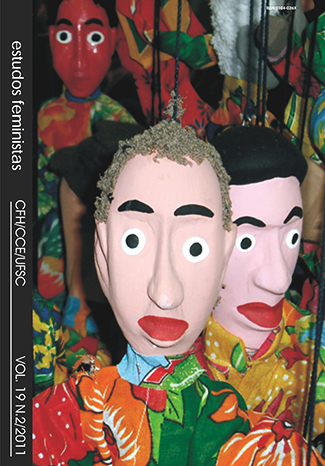Body, Image, Colonial Signs in Astrid Hadad’s Corazón Sangrante
DOI:
https://doi.org/10.1590/S0104-026X2011000200006Abstract
In this article, we present a discussion about the use of the heart as an important allegorical element of recognition of a collective identity in Latin America. The work of Astrid Hadad, a Mexican performer-cabaretera, of Maya-Lebanese origin, points to the criticism of a control policy that organizes gender models in Mexico. The experience of colonization in Latin America was guided by discursive strategies which employed the heart as an important allegory of subordination, especially that of women. In her video clip Corazón Sangrante, using the linguistic strategies of the melodrama, Hadad uses the ambiguity of irony to approach this issue, pointing to colonial marks in the contemporary Mexican culture.Downloads
Downloads
Published
How to Cite
Issue
Section
License
Revista Estudos Feministas is under the Creative Commons International 4.0 Attribution License (CC BY 4.0), that allows sharing the work with recognition of authorship and initial publication in this journal.
The license allows:
Sharing (copying and redistributing the material in any support or format) and/or adapting (remixing, transforming, and creating from the material) for any purpose, even if commercial.
The licensor cannot revoke these rights provided the terms of the license are respected. The terms are the following:
Attribution – you should give the appropriate credit, provide a link to the license and indicate if changes were made. This can be done in several ways without suggesting that the licensor has approved of the use.
Without additional restrictions – You cannot apply legal terms or technological measures that prevent others from doing something allowed by the license.




